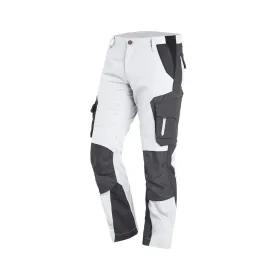Stretch Work Pants: Essential Gear for Using a Carpenter’s
Hatchet

medium.com/@nathaniel3689/stretch-work-pants-essential-gear-for-using-a-carpenters-hatchet-e76b0b0efc97
When it comes to choosing the right gear for heavy-duty tasks, stretch work pants and a carpenter’s hatchet stand out as essential tools for many tradespeople. These work pants offer flexibility and comfort without sacrificing durability, making them ideal for a variety of physical activities. Similarly, the carpenter’s hatchet is a versatile tool that can handle everything from rough framing to finer woodworking tasks.
The blend of comfort and functionality in allows professionals to move freely while tackling demanding projects. They are designed with materials that provide both stretch and breathability, ensuring optimal performance throughout the workday. Coupled with a reliable carpenter’s hatchet, which is crucial for precision and control, this combination equips individuals to work efficiently and effectively.
In the world of construction and woodworking, the right tools can significantly impact productivity. Stretch work pants and a carpenter’s hatchet not only enhance mobility and ease of use but also contribute to a professional’s overall success on the job. Choosing the right gear can make all the difference in achieving high-quality results.
Essentials of Stretch Work Pants

Stretch work pants blend functionality with comfort, making them an essential part of any workwear wardrobe. Key aspects include the materials used, the fit and comfort provided, and their overall durability for various applications.
Materials and Fabric Technologies
Stretch work pants typically incorporate a blend of materials designed for flexibility and breathability. Common fabrics include cotton, polyester, and elastane.
offers natural comfort and breathability enhances durability and moisture-wicking properties. provides the necessary stretch.
Advanced fabric technologies, such as ripstop weaves and water-resistant coatings, improve performance in demanding environments. These materials not only accommodate movement but also stand up to wear and tear, ensuring longevity in various work conditions.
Fit and Comfort Considerations
Fit is crucial in stretch work pants to enable ease of movement. A well-designed cut, such as a slim or regular fit, ensures comfort without being restrictive.
In addition to fit, features like an adjustable waistband and articulated knees can enhance mobility
Reflective elements, pockets, and reinforced stitching are also important for added functionality. Stretch work pants should allow for bending, squatting, and climbing without chafing or discomfort, making them suitable for a range of physical tasks.
Durability and Use Cases
Durability in is vital for professionals in industries such as construction, landscaping, or manufacturing.
Heavy-duty stitching and reinforced stress points contribute to a longer lifespan. Use cases for these pants include on-site work, outdoor activities, and even casual wear benefit from the robust fabric and pocket solutions. appreciate the flexibility for movement while bending or kneeling.
Choosing the right pair involves considering the specific job requirements and the environments in which they will be worn.
Features of a Carpenter’s Hatchet
A carpenter’s hatchet is a versatile tool tailored for various woodworking tasks. Its design combines efficiency and functionality. Key features that enhance performance include blade design, handle ergonomics, and maintenance considerations.
Blade Design and Sharpness
The blade of a carpenter’s hatchet is typically made from high-carbon steel, known for its durability and edge retention. A well-shaped blade features a beveled cutting edge, allowing for precision chopping and hewing.
: Blade surfaces vary from flat to curved, providing options for different tasks like splitting or shaping wood.
: A sharp blade enhances cutting efficiency and minimizes user fatigue. Regular honing and sharpening maintain its effectiveness.
: Some blades come with coatings to prevent rust, extending the lifespan of the tool.
Handle Ergonomics and Materials
The handle of a carpenter’s hatchet is crucial for user comfort and control. Common materials include hickory and fiberglass, each offering unique benefits.
: Contoured designs promote a secure grip and reduce slippage during use.
: A standard length typically ranges from 14 to 18 inches, balancing leverage and precision.
: Fiberglass handles often feature design elements that absorb shock, enhancing user comfort during repetitive strikes.
Maintenance and Safety Tips
Proper maintenance ensures a carpenter’s hatchet remains effective and safe to use. Regular cleaning helps prevent buildup that can damage the blade.
: Users should wipe the blade after each use and apply oil to the edge to prevent rust.
: Keeping the hatchet in a dry, secure place protects it from moisture and accidental damage.
: Always use protective gear and ensure the working area is clear. A sheath or blade guard can prevent accidents when not in use.
